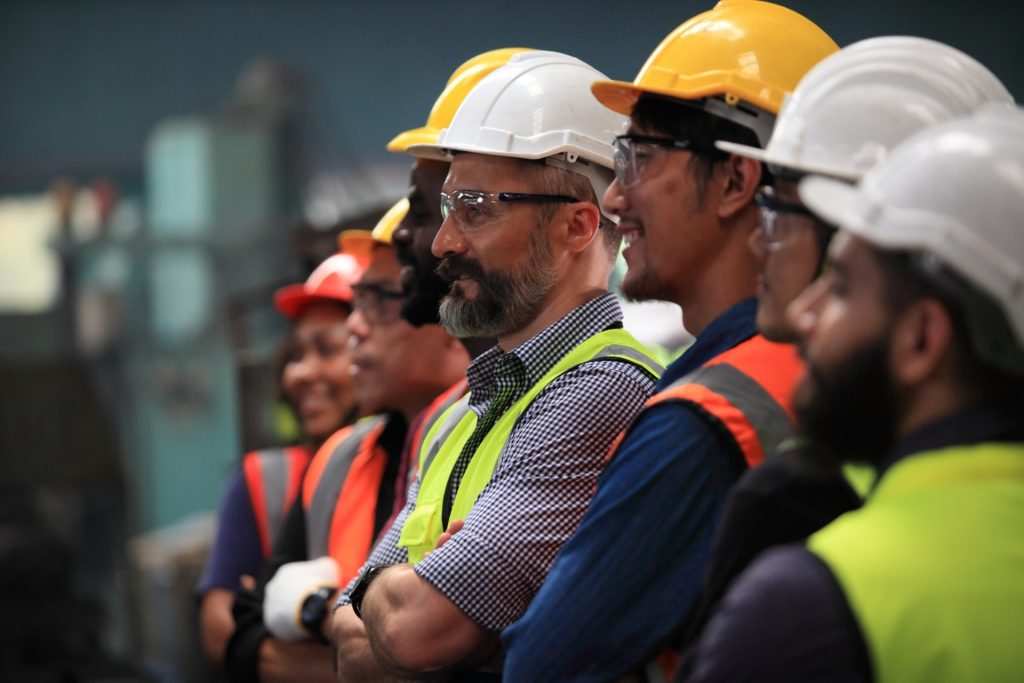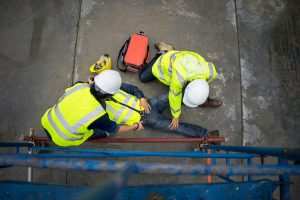In the rapidly evolving world of the construction industry, safety remains a paramount concern. Construction sites are rife with potential hazards, from heavy machinery and high-risk activities to the use of hazardous materials. It is these inherent risks that underscore the absolute necessity of proper training for all workers on a construction site.
However, not all training is created equal. While traditional classroom training has its merits, it often falls short of fully preparing workers for the real-life scenarios they will face on the job. This is where on-site training comes into play. By providing workers with hands-on experience in their actual work environment, on-site training bridges the gap between theory and practice.
In this blog post, we delve into the crucial role of on-site training in the construction industry. We will explore what it entails, its unique benefits, and why it is an indispensable tool for ensuring safety and compliance in this high-risk industry.
Understanding On-Site Training
On-site training, as the name suggests, is training that takes place directly in the work environment. Instead of a generic classroom or an off-site location, training is conducted on the construction site itself where employees will be performing their day-to-day tasks. The aim is to provide a more contextual and practical learning experience that aligns closely with the actual work conditions.
On-site training can cover a wide range of topics, tailored to the specific needs of the construction site. For instance, it may include:
- Operation of Heavy Machinery: Construction sites often utilize complex heavy machinery like cranes, excavators, and forklifts. On-site training can provide workers with hands-on experience in operating these machines, making them familiar with the controls and functionality in the exact setting where they’ll be used.
- Safety Protocols: Every construction site has unique hazards and risks. On-site training allows for instruction in safety protocols that are specific to the site, ensuring that workers are prepared to handle real-world dangers.
- Quality Standards and Workmanship: On-site training can also focus on improving the skills and workmanship of the construction workers. This can involve anything from learning new construction techniques to understanding quality standards and how to meet them.
What sets on-site training apart from traditional classroom training is the direct applicability of the lessons learned. Workers are not just taught about their tasks and the potential hazards, they are shown these elements in their real-world context. This immediate connection between learning and application can significantly enhance understanding and retention of the information, ultimately leading to a safer and more efficient workplace.
The Benefits of On-Site Training
On-site training offers numerous benefits that make it a highly effective method for skills development and safety enhancement in the construction industry. Here are some key advantages:
- Practical Learning: On-site training allows workers to learn by doing. This hands-on approach ensures that the workers are not just theoretically knowledgeable, but also practically proficient. It allows them to gain confidence in their abilities and understand the nuances of their tasks, which can significantly enhance both safety and productivity.
- Contextual Learning: By training on the actual construction site, workers can better understand the specific conditions and challenges they will encounter. This context helps them apply the theoretical knowledge they’ve gained and see first-hand how safety procedures and working protocols are implemented in their daily tasks.
- Customisation: On-site training can be tailored to the specific needs of the construction site and the workers. This could involve focusing on particular machinery, addressing unique safety hazards, or honing in on specific skills that need improvement. Such targeted training can be more effective and relevant than generic, one-size-fits-all training programs.
- Immediate Feedback and Correction: On-site training allows for real-time feedback and immediate correction of mistakes. Instructors can directly observe how workers are performing tasks and provide on-the-spot guidance. This immediate feedback loop can prevent bad habits from forming and ensure that the correct procedures and techniques are ingrained from the start
Challenges and Solutions in Implementing On-Site Training
While on-site training boasts numerous benefits, it is not without challenges. However, with strategic planning and a commitment to safety and learning, these obstacles can be effectively managed. Here are some common hurdles and potential solutions:
- Scheduling: On-site training requires coordination with the ongoing work schedule, which can be complex on a busy construction site. However, this can be mitigated by planning training sessions during slower periods or downtime or scheduling shifts to ensure work continuity.
- Disruption of Work: There may be concerns that training on-site will disrupt the normal flow of work. To alleviate this, training can be structured in a way that integrates with the workflow. For instance, using real tasks as training opportunities, or timing training sessions when the impact on productivity will be minimal.
- Cost: On-site training can have higher upfront costs compared to traditional classroom training due to the need for trainers to come to the site, possible equipment requirements, and potential slowdown of work. However, the long-term benefits often outweigh these initial costs. Improvements in safety, efficiency, and quality can lead to cost savings over time. Additionally, consider the potential costs of accidents or substandard work that can be avoided through effective on-site training.
- Safety During Training: On-site training in a live work environment can introduce its own safety concerns. It’s essential to ensure that training is conducted in a controlled and safe manner, with all necessary safety precautions in place. This may include designating specific areas for training, using safety equipment, and ensuring trainers are well-versed in safety protocols.
Conclusion
In an industry as dynamic and high-risk as construction, the significance of effective training cannot be understated. On-site training, with its hands-on, contextual, and customised approach, offers a potent tool for enhancing safety, boosting productivity, and fostering a culture of continuous learning in the workplace.
While implementing on-site training presents its own set of challenges, the long-term benefits in terms of worker safety, operational efficiency, and regulatory compliance are substantial. It provides workers with the knowledge and skills they need in the context of their actual work environment, enhancing their ability to apply what they’ve learned and effectively manage real-world situations.
On-site training is not just a box to be ticked, but a strategic investment in the workforce and the overall success of the business. By recognising its value and taking steps to overcome implementation challenges, construction companies can create safer, more efficient work environments that contribute to a stronger, more resilient industry.
Get in touch today for more information on our services.












